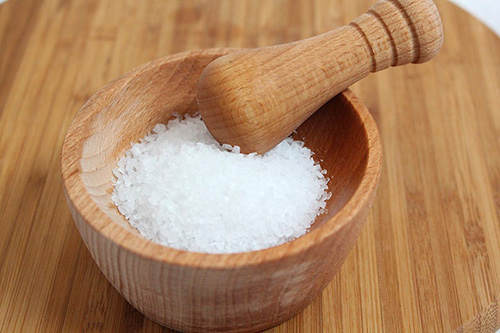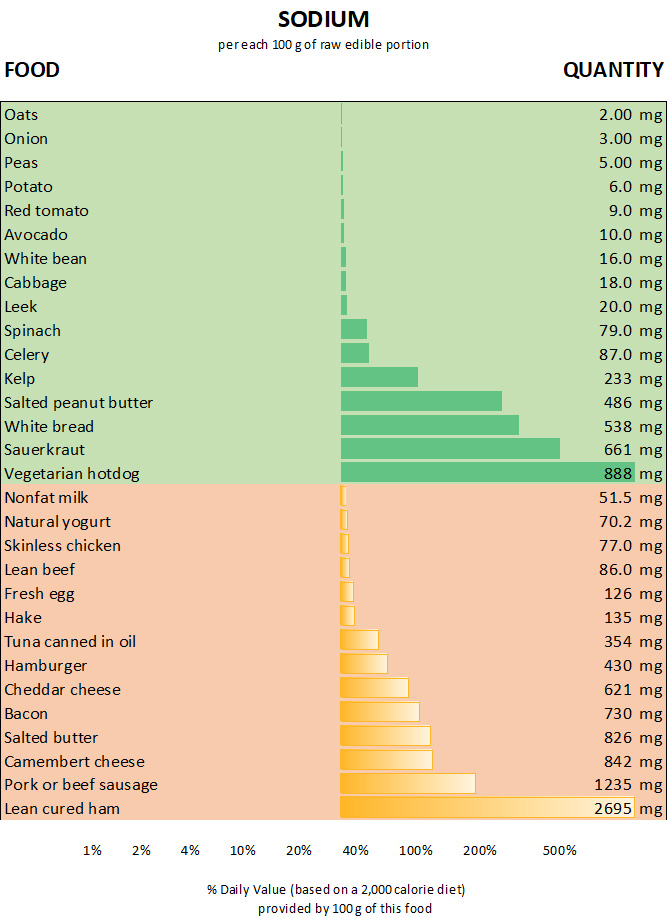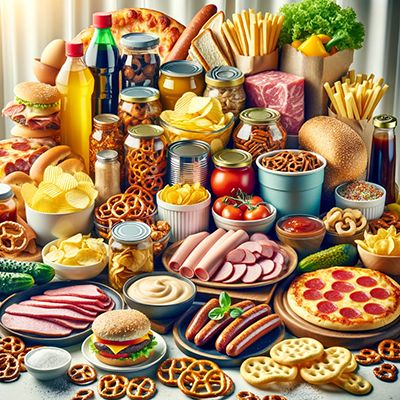Contents
Before we get into the best food sources of sodium, let’s learn more about this essential element. The element sodium, with the atomic symbol Na and the number 11, has been vital to human history, science, and daily life. It is a first-group element of the periodic table and a highly reactive alkali metal necessary for many different materials and compounds. Because of its unique qualities, sodium is essential in various industries, from table salt to cutting-edge technologies.
Chemical Characteristics
Numerous noteworthy chemical characteristics of sodium contribute to its diverse range of applications. Due to its high reactivity, it can quickly lose its lone valence electron and transform into a positively charged ion (Na+). Due to its characteristics, it functions as a superb reducer and an essential element in several chemical processes. Additionally, sodium has a low electronegativity, which increases its ability to form ionic connections with other features. It produces sodium chloride (Na Cl), also called table salt, essential for the human diet when mixed with chlorine.

Human Health Role
Sodium is essential for the body to continue functioning correctly. It is a crucial ingredient that, in the form of salt, regulates fluid balance and supports neuron and muscle contractions. However, consuming too much salt can result in conditions including high blood pressure and cardiovascular disorders. Maintaining a balanced diet and being aware of sodium intake is crucial.
Applications in Industry
Due to its reactivity and distinctive qualities, sodium is widely used in various sectors. One of its most popular uses is making sodium hydroxide (Na OH), sometimes called caustic soda. Sodium hydroxide is a robust base for producing soaps, detergents, and paper. A crucial component in metallurgy, which separates reactive metals like titanium and zirconium from their compounds, sodium also has reducing characteristics.
Transportation and energy storage
In energy storage and transportation, sodium is also creating a stir. Due to its availability and reduced price, sodium-ion batteries are being investigated as a lithium-ion battery substitute. Sodium-ion batteries have the potential to transform the technology of electric vehicles and renewable energy storage, even if they are still in the early stages of development.
Salt in Daily Life
Beyond its uses in industry, salt permeates every aspect of our lives. It is essential to preserve food since sodium-based preservatives like sodium nitrate and sodium benzoate work to stop the growth of bacteria and increase shelf life. Sodium-based substances are also used in water treatment, where sodium hypochlorite acts as a disinfectant to ensure the water is safe to drink.
Because of its exceptional qualities and many uses, sodium is crucial in many industries. Its importance in our daily lives may be seen in its industrial uses in manufacturing metals and chemicals and its position as an essential nutrient for human health. The importance of sodium is anticipated to increase as research and technological development proceed, spurring innovation in energy storage, transportation, and other areas. Understanding sodium’s adaptability and influence offers a window into the intriguing world of chemistry and its real-world applications.
Top Food Sources of Sodium

Sodium Scientific Facts
Chemical composition: Mineral element. Combined with another element, chlorine. It forms sodium chloride or common salt. Sodium also forms part of many other mineral salts, such as sodium iodide or sodium nitrate.
Sources: Sodium is present in almost all foods. Forming different salts. Its origin may be triple:
Naturally present sodium in foods:
- Plant-based foods: All of these are low in sodium. It is practically nonexistent in fruits, and there are only slight amounts in legumes and grains. Vegetables such as celery, spinach, and seaweed are the richest in sodium.
- Animal-based foods: Sodium is in relatively high milk, eggs, and fish levels.

Added sodium in common salt: Salt is added to most processed foods, particularly cured meats such as sausages and ham.
Sodium is added especially as an additive. Many additives used in food processing are sodium salts, such as sodium alginate and sodium benzoate.
Absorption: Almost all sodium taken in is absorbed into the bloodstream. The kidneys must eliminate the excess, which tends to be up to 90 percent of that taken in with foods. It is the most critical extracellular ion.
Consequences of excess: arterial hypertension, edema (fluid retention), and calcium loss through the urine.
Increased need: Heavy perspiration, intense vomiting, or diarrhea.
Sodium/potassium balance: Animal-based and processed foods, bread, preserves, sausages, etc. Contains more sodium than potassium. Their regular consumption alters and is a factor in hypertension and other diseases.
Daily Value (Acceptable Daily Intake) of Sodium
Minimum: 500 mg daily, equivalent to 1.25 g of common table salt.
Acceptable Daily Intake: 2400 mg daily, equivalent to 6 g of common table salt.
The Western diet provides an average of 4000 mg of sodium (10 g of salt), which is excessive and overburdens the body. To reduce sodium intake:
- Reduce the consumption of processed foods.
- Do not use salt at the table.
Health Disclaimer: The information on this website is for educational uses only and is not a substitute for professional medical advice. Always consult an authorized healthcare provider for any health concerns before using any herbal or natural remedy. We do not establish, treat, cure, or prevent any disease. Reliance on any material from this website is solely at your own risk. We are not responsible for any adverse effects resulting from the use of information or products mentioned on this website.
REFERENCES
- George D. Pamplona-Roger, M.D. “Encyclopedia of Foods and Their Healing Power.” George D. Pamplona-Roger, M.D. Encyclopedia of Foods and Their Healing Power. Trans. Annette Melgosa. Vol. 1. Chai Wan: Editorial Safeliz, 2005. 407. Print. [food sources of sodium]
- American Heart Association Recommendations: https://www.heart.org/en/healthy-living/healthy-eating/eat-smart/sodium/how-much-sodium-should-i-eat-per-day
- Get the Scoop on Sodium and Salt: https://www.heart.org/en/healthy-living/healthy-eating/eat-smart/sodium/sodium-and-salt
- Sodium Sources: https://www.heart.org/en/healthy-living/healthy-eating/eat-smart/sodium/sodium-sources
- Dietary Guidelines for Americans 2020-2025: https://www.dietaryguidelines.gov/sites/default/files/2021-03/Dietary_Guidelines_for_Americans-2020-2025.pdf (See page 31-34)
- Use to compare sodium content across various foods: https://fdc.nal.usda.gov
